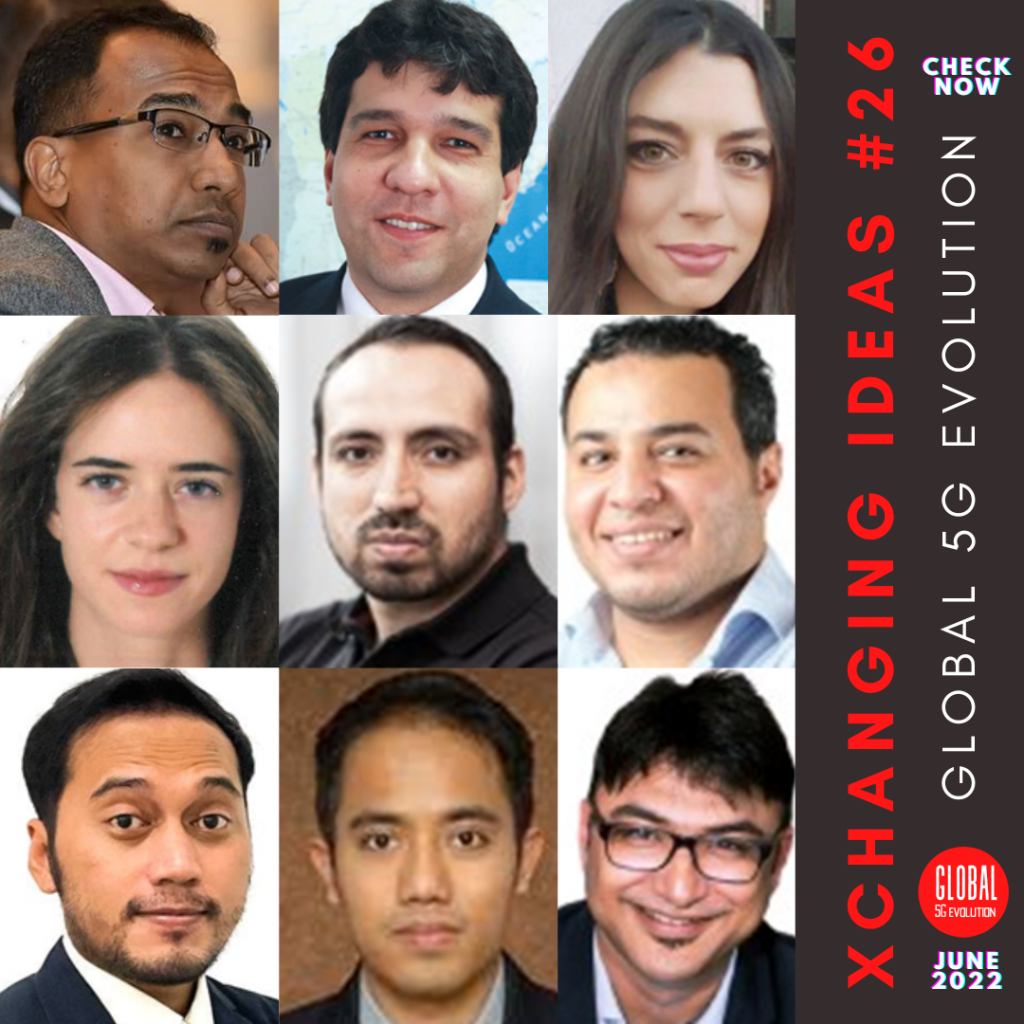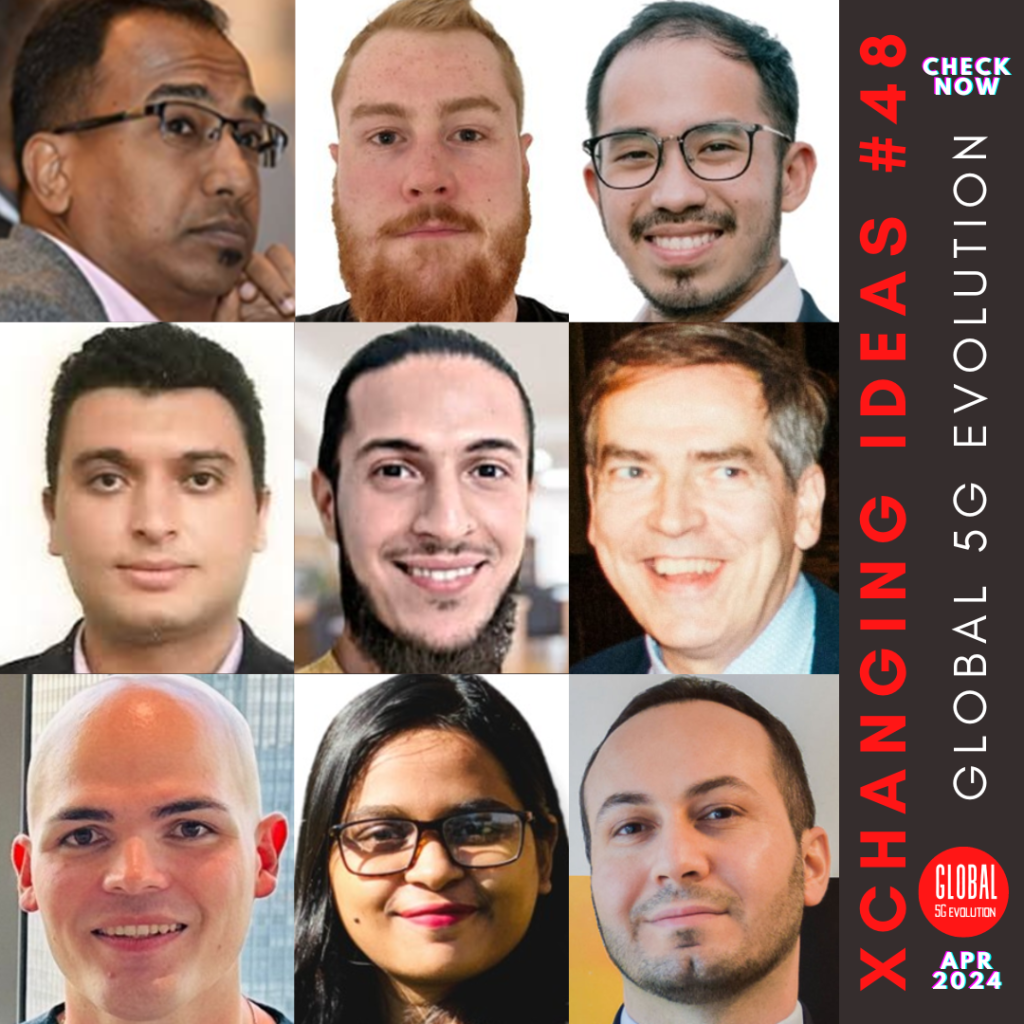
Cars currently rely on short-range communication systems built by manufacturers, but these are insufficient for the future of connected and autonomous vehicles, which require long-range communication technologies like C-V2X. To build a robust V2X ecosystem, collaboration among all industry players—including car manufacturers, telecom operators, infrastructure providers, and regulators—is essential. Telecom operators, leveraging their existing cellular networks, play a crucial role in providing the wide-area, low-latency infrastructure needed for effective V2X communication, enabling enhanced road safety, traffic management, and new services. A holistic, cooperative approach will accelerate deployment, ensure interoperability, and unlock the full potential of connected vehicle technologies. The 5G Automotive Association (5GAA) presented the third edition of its C-V2X Roadmap, outlining a visionary plan for the global deployment of advanced connected vehicle technologies through 2030
Software Defined Vehicles – Revolutionizing the Automotive Industry, Data centers Vehicle Connectivity. App store for cars. Evolving Teams into the Future of Cars Connectivity. EDGE Computing & Vehicles. C-V2X in Indian roads. EV as home energy storage: The future of energy-efficient houses.
Vehicle connectivity encompasses more than just V2X communication, Software-Defined Vehicles (SDV), infotainment, and autonomy; it also includes embedded and tethered systems that provide internet connectivity, GPS navigation, diagnostic sensors, and entertainment, often integrating with external devices like smartphones via Bluetooth. Key components involve onboard sensors and telematics systems that collect and transmit vehicle data for diagnostics, predictive maintenance, and enhanced driving assistance. Connectivity relies on 5G, Wi-Fi, Bluetooth to enable real-time data exchange with infrastructure, other vehicles, cloud services, and personal devices. Additional features include Over-The-Air software updates, smart access through digital keys, vehicle-to-grid integration for electric vehicles, advanced safety & security systems. Together, these elements create a comprehensive ecosystem that supports V2V, V2I, V2P, V2C, V2D, V2N communications, enhancing safety, convenience, efficiency, new mobility services such as shared & autonomous driving. Connected car apps play a crucial role in vehicle connectivity by enabling drivers to remotely monitor and control various car functions via their smartphones. These apps typically connect to the vehicle through Bluetooth Low Energy (BLE) for real-time, bi-directional data transfer or via manufacturer-provided APIs that allow secure access to vehicle data such as battery status, location, climate control, and diagnostics.
The 60th Season Session. The Looming Spectrum Crisis. LTE-M/NB-IoT & 5G SA Compatibility. Italy Customers Adoption on Cloud, IoT, 5G & MPN. AI-Native Design towards 6G. Retail Technologies based on Fog Computing. Venture Clienting at Vodafone Germany. Transforming the Telco Monetization Landscape. Transforming 5G Use Cases driving the Connected Enterprise. Securing the 5G Enabled OT Edge.
How Telecom and AI networks are impacted by the New Tariffs? The new tariffs, are driving up the cost of imported telecom equipment. This affects everything from network infrastructure to consumer devices. With higher equipment prices and fixed capex budgets, telecom operators are expected to slow down the rollout of new infrastructure, such as 5G and fiber networks, rather than increase spending. The tariffs are causing telecom providers to reconsider their sourcing strategies. Some are shifting to domestic suppliers or countries not subject to high tariffs, while others are facing operational and compliance burdens. As costs rise, carriers are likely to pass some of the burden onto consumers through higher service prices or longer device financing terms. This could reduce demand for new devices and services. AI networks rely heavily on advanced hardware (e.g., GPUs, servers). Tariffs on imported components, especially from Taiwan and China, increase costs for building and expanding AI infrastructure. The tariffs are incentivizing investment in domestic manufacturing and automation, but the U.S. currently lacks the full supply chain and workforce to quickly replace overseas production. This could create mild growth in robotics and industrial automation, but not enough to offset immediate challenges.
How do we balance AI making our networks more flexible with ensuring they remain reliable? Balancing AI’s network flexibility with reliability necessitates a multi-faceted approach, addressing key challenges like the inherent tension between AI’s adaptability and the need for predictable performance, data dependency and potential biases, the “black box” nature of some AI models hindering transparency, and new security vulnerabilities. Strategies to mitigate these risks include adopting hybrid network management combining AI with traditional methods, implementing robust monitoring and observability tools for real-time tracking, rigorous testing and validation of AI models, utilizing explainable AI to enhance transparency, building redundancy and fail-safe mechanisms, hardening security against adversarial attacks, maintaining human oversight for critical interventions, and establishing industry standards and governance to ensure responsible and reliable AI deployment.
The 58th Season Session. ITU-R Update–5G Towards 6G. IoT in SME - Business Cases. Lessons learnt from 5G-routes. 5G Positioning and Security. The Convergence of 5G, Quantum Computing, and AI in Shaping the Metaverse Ecosystem. How AI is revolutionising strategy consulting. 5G and the Future of Connected Medicine: Revolutionizing Healthcare Through Technology. Handover challenges in Satellite Communication. Emerging 5G-enabled advanced healthcare. The Role of 5G/6G Cellular Network Technologies in Achieving the goals of Sustainable Development.
Are Telcos behind the AI Curve? Telcos are actively exploring and implementing AI in key areas, particularly network optimization, where they are arguably leading in certain applications. They are catching up and making significant progress. This includes exploring the potential of Large Language Models (LLMs). While direct, real-time integration of general-purpose LLMs into core network operations is still facing challenges related to latency, cost, and explainability, telcos are actively investigating their use in other areas. These include customer service (via sophisticated chatbots), network automation (code generation and intent-based networking), and data analysis. The telecom industry is undergoing a digital transformation, and AI, including the growing capabilities of LLMs, is playing a crucial role in this process. The focus will be on developing and deploying specialized AI models and strategically integrating LLMs where they offer the most value, balancing innovation with the practical constraints of network operations.
In 2025, 5G continues its global expansion, evolving towards “5G Advanced” while simultaneously laying the groundwork for 6G research, focusing on terahertz frequencies. AI is becoming integral to network operations, driving optimization, automation of tasks like network planning and predictive maintenance, and enhancing cybersecurity. Cloud and edge computing are further transforming network architectures, with edge computing enabling low-latency applications and cloud-native networks offering greater flexibility and scalability. Sustainability is a growing priority, with the industry focusing on reducing its environmental footprint through renewable energy and optimized energy consumption. Customer experience is being enhanced through personalized services and improved customer support via AI-powered solutions. Open RAN and network disaggregation are gaining traction, fostering competition and innovation in network deployments. Private 5G networks are becoming more common, offering dedicated connectivity for enterprise use cases. Finally, satellite connectivity is playing an increasingly important role in extending coverage to remote areas.
5G-Advanced is the next evolutionary step in 5G technology. It will bring a new level of enhanced capabilities beyond connectivity and enable a wider set of advanced use cases for verticals. It will support advanced applications with enhanced mobility and high reliability as well as artificial intelligence (AI) and machine learning (ML) that will improve network performance. It will also introduce further improvements in spectral efficiency and energy savings. In this article we will examine what the 5G-Advanced era will bring, how our lives will change and how we will get there. 5G-Advanced enables innovated applications (watch in this video), Generate more revenue for your business through differentiated connectivity and new services (watch in this video), Reduce your operating costs through a higher level of automation and energy optimization, Enhance your users’ experience by unlocking additional capacity, more flexibility in technically demanding deployments and enhanced 5G device performance.

The future of 5G and its potential to transform various industries; including the benefits of 5G, such as improved energy efficiency, enhanced manufacturing processes, and advanced agricultural solutions. Also addressing the challenges with 5G deployment, including spectrum availability, infrastructure costs, and security concerns. Also emphasizing the importance of collaboration among stakeholders to ensure the successful implementation of 5G and highlights its potential to revolutionize connectivity and drive economic growth. Various 5G monetization models that CSPs can adopt to capitalize on their 5G investments ; include eMBB for traditional high-speed mobile services, Network Slicing to create tailored network slices for specific industries, Network-as-a-Service (NaaS) to offer network infrastructure as a service, Edge Computing (GPU as a Service) to enable low-latency data processing, AI & 5G-powered partnerships to develop innovative solutions, Multi-Party Monetization to collaborate with other industry players, Value-Added Services to offer additional services beyond connectivity. By leveraging these diverse monetization strategies, CSPs can generate significant revenue and drive the adoption of 5G technology across various sectors.
The advent of 5G SA core networks & cloudification has significantly increased the complexity of testing. These new architectures introduce a multitude of new challenges, such as increased vendor diversity, dynamic network configurations, the need for continuous testing. The Embrapii CPQD Excellence Centre in Open RAN: By focusing on open-source RAN solutions, the center aims to reduce vendor lock-in, enhance network security, and accelerate the development of new technologies. The O&G industry is embracing IIoT to enhance efficiency, safety, sustainability. However, challenges such as harsh environments, remote locations, stringent security requirements hinder widespread adoption. To overcome these obstacles, the industry is utilizing ruggedized IoT devices, robust connectivity solutions, advanced analytics, and robust cybersecurity measures. AI-powered low-carbon IoT sensors combine energy-efficient hardware with intelligent data processing to reduce environmental impact. They employ techniques like low-power electronics, smart power management, edge computing, data compression, and selective data transmission to minimize energy consumption.
5G AI networks are rapidly evolving, with AI playing a pivotal role in enhancing network performance, security, and user experience. Key trends include dynamic network slicing for personalized services, AI-driven network optimization for improved efficiency and reliability, advanced security solutions powered by AI, and the integration of edge AI for real-time processing and distributed intelligence. Additionally, 5G AI networks are enabling the massive connectivity and intelligent applications of IoT devices, driving innovation across various industries. RedCap, a key advancement in 5G, further expands the capabilities of these networks, enabling a wider range of IoT devices with reduced complexity and power consumption. This synergy between 5G AI and RedCap empowers applications like smart cities, industrial automation, and remote healthcare, driving innovation and improving efficiency across various sectors. When integrated with AI, 5G Broadcast can optimize content delivery, personalize user experiences, and enable innovative applications like real-time video analytics and augmented reality.

The 52nd Season Session. A closer look at 5G Advanced Release 18. Digital Sustainability. 5G: Power of Network APIs. Gen AI and Intellectual Property Rights by Final Design. Revisiting optical wireless communications for revolutionary applications in harsh environments. Artificial Intelligence in Non-Terrestrial Networks and satellite integration in 5G. Strategic Connectivity in 5G and 6G, and remote surgery: The case of Germany. Cloud Migration Strategy, and Application to IT & Telco Workloads. IoT and Industrial 5G Applications.
Are Telcos Dying Slowly? Check out the Q&A session in the end. Digital transformation as well as demanding technologies as AI, are increasing exponentially the energy consumption of the digital assets. We monitor and optimize the carbon footpring emission of your digital assets in order to be close to “Green Digital”. Infobip’s status as an Open Gateway channel partner allows it to integrate CAMARA-compliant APIs seamlessly into its platform. Infobip’s CPaaS solution empowers telcos to launch and monetize new services using CAMARA APIs. Infobip is actively developing and offering additional CAMARA-compliant APIs in collaboration with telco partners. 5G optical wireless communication leverages the properties of light, this technology offers significant advantages over traditional radio-frequency (RF) based communication systems. The convergence of artificial intelligence (AI) and non-terrestrial networks (NTNs), particularly satellite integration into 5G, is ushering in a new era of connectivity and innovation. Final Aim is a promising Japanese startup that’s making waves in the design and manufacturing industry. Strategic Connectivity in 5G & 6G, and remote surgery: The Case of Germany.
The 51st Season Session. 5G-Advanced: Shaping the future of Operator Services. Edge AI Trends from a Mobile Developer's Perspective. AI &6G Into the Metaverse: Opportunities, Challenges, Future. Monetizing with Network API’s. How 5G Brings Humanoid Robots to Life. The Crash of 2033 - The Impact on MNOs. Cloud Migration Strategy &Application to IT & Telco Workloads. Transforming Healthcare with XR: Case Study of Private 5G Implementation with Holomedicine. Private 5G Adoption.
Rethink Research’s, Evolving from our Crash of 2033 vision paper, the thesis is that the emerging generation of consumers will be truly smartphone-centric – leaving the big screen behind. While many factories currently use wired networks and Industrial IoT solutions, 40Factory’s 5G offers distinct advantages for applications requiring constant connectivity and high computational power, such as humanoid robots. One solution is to commercialize a platform that dynamically and on-demand adapts network services to each application and customer in a completely transparent and interoperable manner. This is now achievable with the GSMA Open Gateway, leveraging the CAMARA Linux Foundation project and its standardized telecom APIs, which have been adopted by major operators worldwide. HoloMedicine® 5G, a program designed to elevate digitalization across the entire healthcare spectrum. This platform is a game-changer, seamlessly connecting all aspects of patient care – from admission documents to treatment history and body scans. Watch the Q&A session and find out more the real situation and controversial debate on real challenges the industry is facing!
The 50th Season Session. KT Corp records the Highest Contribution of Beyond Connectivity. The Future Seaport. When DVB-I meets 5G: Optimizing mobile networks for media delivery. 5G: A Game Changer for MVNO Business Models. Making Private 5G Agile and Affordable. Towards Integrated TSN-5G Networks. Digital Twins: 5G and Beyond. Cloud Migration Strategy, and Application to IT & Telco Workloads. Unlock the Future with IoT, IIoT, and 5G: Transforming Industries and Shaping the Connected World. Satellite IoT, its position as a connectivity solution for the IoT
As of June 2024, 5G Release 16 features are still in the early stages of deployment by network operators globally. The pace of rollout varies depending on factors like network infrastructure upgrades, spectrum availability, and operator investment strategies. While some operators have begun offering services leveraging specific Release 16 features (e.g., enhanced mobile broadband with carrier aggregation), widespread commercialization is still evolving. The full potential of Release 16 will likely become more evident as supporting ecosystems like device chipsets and application development mature. Network operators are gradually deploying Release 16 features, and commercialization is picking up steam in specific areas. However, it will likely take some time before the full range of benefits is fully realized across all use cases. Watch the Q&A session and find out more the real situation on GROUND !!!
The 49th Season Session. Harnessing Generative AI for Telcos. Reconfigurable Rf power amplifiers. Danish 5G Innovation Hub & Testbed. AI-driven Private mobile network. The Crucial Role of 5G in Shaping the Evolution of Smart Cities. Redefining the Manufacturing Industry Landscape - the 5G impact. Private 5G as an enable of Smart Industry and Logistics. Cybersecurity Automation in 5G Environments.
The rise of smart manufacturing, also known as Industry 4.0, is transforming the production process with increased automation, data-driven decision making, and interconnected machines. 5G technology, with its high speeds, low latency, and massive network capacity, is perfectly suited to support the demands of smart manufacturing. 5G was a major focus at Hannover Messe 2024. There was 5G and Industrial Wireless Arena” showcasing real-world applications of 5G technology [5G-ACIA.org]. This arena featured live demonstrations and presentations by companies and organizations involved in the industrial 5G ecosystem. Vodafone offer several services and solutions that can be combined to create a smart manufacturing environment powered by 5G. Vodafone provides the 5G network itself, offering high speed, low latency, and massive capacity to connect all the machines and devices in a smart factory [Vodafone Australia].Vodafone works with manufacturers to assess their needs and design a customized 5G solution for their specific smart manufacturing goals. Vodafone collaborates with other technology companies like Ericsson to develop and implement 5G solutions for smart factories, as seen in the e.GO factory project.
The 48th Season Session. 5G Terrestrial & Satellite Convergence 2024. 5G RedCap market forecast, from RAN Research. Asia-Pacific 5G for Enterprise: Use Cases Driving Industrial Digitalization. Telco Cloud Role in the 5G Ecosystem. AI culture and Project Management. The role of Tiesse, an innovation made in Italy, as SME in cutting-edge technologies. Akamai's latest cloud deployments that is leveraging CDN edges to run containers closer to edge. Multi Connectivity access to 5G System.
Discussed a way to deliver mobile network services using a cloud-native architecture. Tthe benefits of cloud-native architectures for mobile network operators; contrasts this with traditional monolithic software architectures. In a cloud-native architecture, the software is broken up into microservices that can be independently scaled & updated. This makes the network more scalable & flexible, and it also allows for faster delivery of services. Also discus the challenges of moving to a cloud-native architecture, such as the need for new standards and regulations. However, he believes that the benefits outweigh the challenges, and that cloud-native architectures are the future of mobile networking.
Red Cap is a low complexity version of 5G designed for industrial IoT applications. It is a successor to low power variants of LTE and is designed to be used in devices with a long operating lifetime (20 years). Red Cap is more capable than Cat 1 NB and Cat M, but it is also more complex. The main driver for using Red Cap right now is for industrial applications where devices need to be reliable and have a long operating lifetime.
As 5G networks rocket towards wider adoption in 2024, the security landscape is bracing for exciting developments and persistent challenges. The anticipated shift to Standalone 5G, boasting enhanced security features, will demand adaptable solutions. New attack vectors unique to 5G, like network slicing and the explosion of IoT devices, will necessitate specialized protections. To combat these threats, a multi-layered defense incorporating firewalls, encryption, and AI-powered threat detection is becoming the gold standard. While concerns linger around network complexity, supply chain vulnerabilities, and standardization, the increasing focus on 5G security paints a promising picture for a safer and more reliable future.
5G broadcasting gears up for takeoff in 2024! Expect larger trials featuring live events like the UEFA Euros and Olympics, showcasing its potential for high-quality, low-latency content delivery to smartphones. Growth forecasts predict a booming market driven by demand for live sports, and even data broadcasting for connected devices.
The 45th Season Session. 5G Vertical Use Cases. New Services on the Path From 5G Advanced to 6G. UK Strategy & Opportunity with Other Countries. 5G Service Based Architecture. Demanded Edge AI & Autonomous Networking in Manufacturing Facility. AI Technology for Hospitality powered by IBM Watson AI. Open Source Test Tool for 5G Core Network Testing. Beyond 5G. Industrial IoT for Smart Manufacturing.
The benefits of 5G are many and varied – 5G has been a catalyst for building intelligence at the network edge, and with the next phase of 5G Advanced underlining the need for end-to-end AI integration, future mobile generations will learn fast, self-orchestrate, and open new possibilities of how we can interact with our devices.
At #45, you can expect to see thought leadership and discuss IoT advancements, 6G, the transformation of industries, smart cities and networked infrastructure – plus how this key technological advancement will change the future of economies worldwide. Globally, connections are expected to reach 1.9 billion by end of 2023, rising to 5.9 billion by end of 2027. The global 5G services market is estimated to reach $2,208.25 billion by 2030. Smartphones connected to 5G will reach download speeds of around 87.5 MB/s – about 20x faster than 4G. 57% of enterprises plan to invest in 5G in the next one to three years.

The 44th Season Session. Telcos Open APIs to Fuel a Developer Revolution. Service Management & Orchestration for 5G RAN Automation. Data Privacy & Data Sovereignty. Digital Acceleration in 5G Era. 5G, Cleantech & Sustainability. Telco Industry Case Study on how Public Cloud can affect business performance. 5G, Generative AI, AR & VR.
Telco open APIs, such as GSMA Open Gateway and CAMARA, play a pivotal role in transforming the telecommunications landscape by: Enabling seamless integration of network capabilities into diverse applications, Fostering innovation and collaboration, Accelerating the development of new services and business models; Ultimately, contributing to a more connected and digitally empowered future.
Application Programming Interfaces (APIs) that enable developers to access and integrate telco network capabilities into their applications and services, fostering innovation and creating new value propositions.
- Benefits:
- Streamlined access to network features
- Simplified development and deployment
- Enhanced user experiences
- Accelerated innovation in the telco ecosystem

The 43rd Season Session. How Digital 3D Fashion Increase Data Usage for Telcos. CSPs 5G Monetization. The Future of Fashion in the Metaverse. The Future of Monetization for Brands is in Gaming. Digital Service Platform as a Revenue-Generating model for Telcos. Digital fashion and the Future of Retail, iCommerce. 5G IoT potential and Carbon Aware Native Applications. How 5G can be Leveraged by Drones Industry.
The telco industry can play a significant role in the development and growth of digital fashion, the metaverse, and 5G-enabled devices and ecosystems.
Partner with fashion brands and designers: Telcos can collaborate with fashion brands and designers to create and offer exclusive digital fashion items and experiences to their customers. This could include virtual try-on features, augmented reality experiences, and even the ability to purchase and wear digital clothing in the metaverse.
Develop and host digital fashion marketplaces: Telcos can create and operate online marketplaces where users can buy, sell, and trade digital fashion items. This could be done through dedicated apps or integrated into existing telco platforms.
Offer digital fashion subscriptions and bundles: Telcos can bundle digital fashion items with other subscription services, such as mobile plans or internet packages. This could make digital fashion more accessible and affordable to a wider audience.
The 42nd Season Session. How Generative AI is Transforming the Way Telcos Do Business. 5G Core Network as a Service. 5G Network Slicing Enabling Business Model Innovation. Telcos to TechCos: Harnessing data in a competitive space. Location-based AR, Visual Positioning and how they are a great use case for 5G. NaaS. Empowering Energy Efficiency with Smart Solutions in 5G.
The 41st Season Session. 5G Monetization Advisory. Driving Telco Innovation & Business Growth with AI. 5G Prescription & Shared DAS Hotel NAAS. Network Slicing. 5G Global IoT. LEO Satellite Communications for CSPs. AI for Automation of Tasks in 5G.
Network slicing is a network architecture that enables the creation of multiple specialized and virtualized networks on a common shared infrastructure. Each of these network ‘slices’ can be monetized based on the specific needs and requirements of different sets of users and enterprise customers. As such, network slicing is critical to enabling the new revenue opportunities presented by 5G.
While operators will indeed find many benefits and opportunities from network slicing, it’s important to note that it’s not without its challenges:
Slices that operate in a multi-vendor and multi-technology environment present great complexity.The slicing ecosystem is dynamic with slice requests often coming in on-demand. Heterogeneous multiband networks have different topologies in different areas — making configuring the slice, assigning resources, and assuring slices meet service level agreements (SLAs) an almost impossible task to do manually, especially in large-scale deployments.
The 40th Season Session.5G
Advanced Starts the Era of Wireless AI. 5G
Open RAN. Europe Regulatory Policy. Open Telco Cloud. 5G Private Network. 5G Security. 5G, AI, Machine Learning. FWA and Private Wireless Overview.
The evolution of mobile networks from 4G to 5G to 5G SA (Stand Alone) has created significant cost pressures on Communication Service Providers (CSPs). As such, they seek new ways to get return on their investment and better monetize their assets. Additionally, 5G is revolutionizing the telecom industry through innovative use cases ranging from cloud gaming for consumers, to machine remote control for enterprises. To unlock the commercial value of these use cases, they need to be offered through new value driven business models beyond traditional session and volume-based product.
CSPs and enterprise companies can partner to offer new services to third parties. In B2B2X scenario, the third party can be a consumer or another business. Every party in a B2B2X scenario wants the flexibility to design price models that make sense to them – how you expose the relevant charging metrics to each party involved, and how the CSP enables them to incorporate this into a billing landscape of their choice. Monetizing 5G-based services in a B2B2X model will require the agility to rapidly onboard new partners and provide them with the self-service and metrics necessary to create their own pricing models based on usage, relevant to their needs.

The 39th Season Session. Spectrum for 6G Explained. Energy
Efficiency as we move 5G to 6G. The 6G Roadmap Towards Ubiquitous Network. Some Commercial Implications Of 6G
Technical Concept. AI/ML in 6G networks. MIMO for 6G. In-X subnetworks for short-range extreme communications. 6G enabled massive IoT networks. Terahertz 6GCommunication. Considering Security in New Era. MEC enabled NTNs for 6G.
We had the privilege of 6G researchers from around the world, representing magnificent top Universities, who are presenting research and development studies in our conference. Their work is helping to pave the way for the next generation of wireless networks, and their insights are essential for understanding the future of 6G. We have global professional services company that is providing consulting services on 6G, including Deloitte, Senza Fili and Global 5G Evolution; which have a deep understanding of the technology landscape, and its consultants are helping clients to develop 6G strategies that are aligned with their business goals. 6GWorld is a community dedicated to the future of wireless communications- provides news, research, analysis on 6G, the next generation of wireless networks. The community hosts events, webinars, and discussions on 6G. We had IEEE representative, discussed the potential of AI and ML to revolutionize 6G networks. 6G Terahertz by Nanyang Technological University, Singapore. CONASENSE Academic Research would like to invite you to attend a Call 4 Papers for the 13th CONASENSE Workshop – will be co-located with the WPMC 2023, co-sponsor by IEEE and River Publishers at the University of South Florida in Tampa, Florida – USA, between the 28th of November-1st of December, 2023.

The 38th Season Session. Starlink vs 5G: Which is the Future of Connectivity? Digital Operations at the EDGE. NB-IoT from Space. Opportunities and challenges of 5G development in the Americas. Smallsats and Connectivity. Architectures for 5G Terrestrial–Space Communication Convergence
Sateliot is the first satellite operator to offer IoT connectivity over standard 5G NB-IoT. Sateliot constellation serves as cell towers in space, expanding mobile operator coverage and providing global connectivity to unmodified commercial terrestrial devices wherever they are.
The voice of 5G and beyond for the Americas. 5GAmericas facilitates and advocates for the advancement and transformation of 5G and beyond throughout the Americas.
LEO Satellites will play a key part in extending cellular 5G networks to air, sea and other remote areas not covered by small cell networks. For the end-user, satellites offer a seamless extension of 5G services from the city to airplanes, cruise liners and other vehicles in remote locations. IoT sensors and M2M connections on farms and remote worksites like mines can also capitalize on the wide coverage areas offered by 5G satellites.
Integrating satellites with 5G infrastructure improves the Quality of Experience (QoE) of high capacity applications. By intelligently routing and offloading traffic, satellites save valuable spectrum and improve the resilience of each network.

The 37th Season Session. The Future is Bright for 5G in the Enterprise. 5G Indoor Planning Best Practices. 5G Security. Farming with 5G XR to Fight Climate Change. 5G Gaming, Esports, Mobile Gaming – Real time. 5G Edge & Cloud, 5G Indoor Solutions, 5G Private Network. The Journey to Telco Cloud.

The 36th Season Session. Private 5G. 5G: 2023 Market Drivers, Insights & Considerations. Potential challenges and enterprise benefits. How 5G will impact Blockchain, Crypto & Metaverse industries. Hype or Virtual Reality? Mapping Telco Metaverse Strategies. AI in 5G Networks. Integrated Access And Backhaul. 5G Non Terrestrial Network. 8K 360deg Camera setup in an Ice Hockey arena in Finland PoC. 5G Innovations in Finland.
Nokia highlights, The ice hockey match PoC, connecting Ultra High Definition 360 degree cameras over 5G inside the Nokia Arena, proved one of the key use cases for 5G. Not only did this show that 5G delivers wireless connectivity with high reliability and ultra-low latency, but it showed that using Core in an “as a Service” model is an excellent method to support demanding network connectivity needs in an efficient manner. Integrating 5G mmWave RAN into Nokia’s cloud native deployed 5G SA Core [Software as a Service], with remote UPF (User Plane Function), proved that for spike demand 5G use cases, the Network Slice as a Service model should be seriously considered by CSP’s working with their TV broadcast partners.

The 35th Season Session. Global 5G Community. 5G UAV Unmanned Aerial Vehicle. 4G to 5G RAN Smooth Transition. 5G Transport network requirements. 5G Mobile Edge Computing. 5G for digital twin and metaverse. ORAN scenarios based on real life experiences. 5G Mission Critical Communication Services in Thailand. An Applications SDP using MCN and Private Network
The following two proposals may overcome the limits of classical satellite communications:
1. Adoption of the new radio (NR) interface
2. Use of dedicated non-terrestrial elements (NTEs), such as Unmanned Aerial Vehicle (UAV),High-Altitude Platform Station (HAPS),and Low-Earth Orbit (LEO) satellites on novel orbits
3. 3GPP started the standardization of 5G on NTN by proposing three architectures:
Transparent NTN architecture, Regenerative NTN Architecture and On-Board Distributed Unit NTN Architecture.

The 34th Season Session. Global 5G Community. 5G UAV Unmanned Aerial Vehicle. 4G to 5G RAN Smooth Transition. 5G Transport network requirements. 5G Mobile Edge Computing. 5G for digital twin and metaverse. ORAN scenarios based on real life experiences. 5G Mission Critical Communication Services in Thailand. An Applications SDP using MCN and Private Network

The 33rd Season Session. 5G mmwave. 5G Security. Network Programmability to Enhance Ecosystem Innovation. Open RAN. Beyond 5G: 6G NTNs. eSIM 5G. 3GPP RAN1/ORAN. Ubiquitous Communic 5G networks.
Network operators should be aiming to create a new revenue stream and deliver value to its customers by offering open APIs that allow anyone to add connectivity to any device or service. The healthcare industry is one of the areas that this technology could be beneficial, by offering service provisioning, location reporting, session quality management, and enhanced monetization and cost controls. Vlad added, “In the use case presented, we highlighted how these APIs could be used by developers to enhance the service to their customers. Using an API-first SaaS Charging engine, like Totogi, should also be a big priority for operators to allow highly customizable interactions with their customers.

The 32nd Season 3GPP Release 18.Network Slicing.How can Telcos Capitialize on Metaverse. Beyond Connectivity. Ambient Intelligence (AmI) in 5G-Advanced.Future Industry trends of 5G including Web3 and Metaverse.5G 4k & 8k Video streaming & AR, VR.GSMA APAC 5G Industry Community & IoT. Innovative 5G Sync Solution.
The motivation behind supporting Ambient Intelligence (AmI) application in 5G-Advanced networks is combining the power of energy harvesting, IoT, sensing, cloud technologies and 5G-Advanced networks to cost-effectively network operation to satisfy a specific goal or interact with humans subject to natural form of inputs such as sentences and facial expressions. In 3GPP Release 19, two broad categories of use cases or design options will be explored; Ambient IoT and Service Robots with Ambient Intelligence.

The 31st Season Session. 5G Standalone Challenges. 5G Deployment Strategy. 5G Metaverse. 5G Telco Cloud.5G Business Models.5G EDGE & Cloud. 5G for Remote Medical Education and in Telemedicine.5G, IoT & Machine learning in Vertical Industries.Looking Beyond 5G: What Can We Expect in 6G.
Telco cloud is a new solution revolutionizing how applications are created, delivered and how the world communicates. As “Learning Catalysers”, LabLabee believes its role is to make learning and training on these technologies easier, more accessible, and more attractive for both students and professionals. Theory has never been enough and that is why; promises to deliver real-world practice with real-world use cases, built, validated and reviewed by telco cloud experts. 5G together with XR Doctor Medical Metaverse Platform lets scale real clinical cases training into simulation surgery on digital patient for a huge number of students. Significant reduction in training costs, increasing training efficiency. Collaborative remote work with the effect of personal presence in the “classes” or operating room regardless of the geographical location.
The 30th Season Session. 5G Edge Computing – The CSP Opportunity – Google Case Study. 5G Open RAN. Smart Supply Chains with 5G & MEC.3D live Digital Twins. Disaggregated Near-RT RIC Control Plane. Digital Transformation at the Edge empowered by 5G. Integrated Security for Telco Cloud Edge. Co-investment of MNOs & Big Techs, contribution to 5G investment.
Collaboration for the success of 5G Open RAN in a brownfield environment, there must be a synergy between the traditional and Open RAN vendors. Operators can help instill confidence as they will be the secret sauce in the success of the interoperability of openness. Powerful 5G solutions are brought to life by experienced Open RAN integrators. Now the bigger the opportunity the bigger the challenge, as deployments have rolled out, systems integration has been needed to validate and operationalize these end-to-end solutions because they converge challenges across multi-layers and multi-domains including radio, transport, core, cloud, data management, applications, devices, and security,
The 29th Season Session. 5G Cloud Gaming Driving Revenue Growth for SPs. 5G RAN & New Features. 5G for Rural Broadband. 3D live Digital Twins. 5G Private Network. Key Trends Of Digital Twin-Empowered 6G. 5G Network Slicing. 5G Edge & Cloud.
Ready to launch a 5G gaming service? Cloud gaming is changing the content distribution dynamics in the gaming industry. And 5G helps to enable ways for gamers to play anywhere, without continuously purchasing hardware upgrades or expensive games.
Cloud gaming is a new way of consuming video games that’s set to grow significantly in the next five years. The ultimate goal is to enable people to play any game on any device as long as they have a good internet connection. This is possible because the games (hardware and software) are hosted in remote data centers, from where the game is streamed to the player’s device. Cloud gaming can therefore significantly reduce the cost of retail, packaging, delivery of hardware and improve ease of access for gamers. The development of new consoles is now slowing down or ending. This in turn puts high requirements on the connectivity network, especially in the case of mobile cloud gaming if user experience should be always good and when the evolution towards augmented reality (AR)/virtual reality (VR) takes off with even higher requirements.

The 28th Season Session. 5G Private Network & EDGE Cloud. 5G Operations Using Data & AI. Co-creating solution with 5G Ecosystem. 5G becomes dominant global smartphone technology. 5G Smart Construction. Web3 Technologies for Industrial Design. 5G Smart Manufacturing
Ultimately 5G, moves the construction of smart cities from the theoretical to the practical and paves the way for the development and deployment of new applications ranging from monitoring air quality, energy use and traffic patterns to street lighting, smart parking, crowd management, and emergency response. The smart city uses digital solutions, technology and data to improve significantly several key quality of life indicators. This leads to improved traffic and commute time, accelerated emergency response time, reduced healthcare costs, decreased water consumption, unrecycled waste and harmful emissions, and ultimately in a huge saving potential.
Smart cities use IoT to collect real time data to better understand how demand patterns are changing, and respond with faster & lower-cost solutions. Broadly speaking, digital city ecosystems are designed to run on ICT frameworks that connect several dedicated networks of mobile devices, sensors, connected cars, home appliances, communication gateways & data centers.

The 27th Season Session. Why Metaverse Need 5G to Succeed. 5G Industrial IoT. 5G Private Networks. 5G Security. 5G Connected Hospital. New Business Models for Telco using Blockchain. 5G for Healthcare. C-V2X Scenarios & Performance. Smart Transportation & 5G Release 18
C-V2X was developed by the telecom industry specifically for transportation safety applications & further standardized at the application layer by automotive & transportation stakeholders & is gaining global mindshare.
MNOs can utilize new business models to interact with the automotive industry to ensure that C-V2X services reach their full potential. Network slicing is likely a key component allowing MNOs to consistently meet the diverse requirements of automotive OEMs that span safety, convenience & efficiency use cases. The goal of network slicing is to allow MNOs to operate multiple logical networks, or slices, using their common infrastructure to serve multiple customers while simultaneously isolating the network slices to ensure specific SLAs.
Edge computing is a significant tool that can reduce latency for C-V2X use cases requiring computation by relocating those computations closer to the end user rather than existing in a distant public cloud data center.
Offering different slices of the mobile network based on specific service requirements of the end customer also gives MNOs the power to differentiate pricing and better monetize the full extent of their network capabilities.

The 26th Season Session. Moving 5G Network Functions to a Hybrid Cloud Environment. 5G Smart Manufacturing. Slicing & 5G Private Network. Smart Manufacturing. 5G Private Networks. Telco Cloud. Simplifying the Network Slicing Orchestration. 5G Private Network. Smart Transportation. Smart Transportation.
Network slicing still a critical gateway to 5G. Despite enterprise wariness about privacy and security, network slicing will remain an attractive option for SMBs and enterprises. By 2025, it is expected providers will offer network slicing via public networks as a cost-effective 5G option for SMBs because companies pay only for what they use.
Additionally, many IT teams might not have the resources or expertise to build and support the infrastructure required for a private 5G network, which includes 5G New Radio, a 5G core and transport using fiber or microwave. By using a provider’s public network, customers can consume 5G services backed by a service-level agreement, while avoiding the hassle of procuring spectrum and maintaining the network.
It is indicated that network slicing via a public network is better suited for wide area networking — compared to a more contained LAN environment — making network slicing a “critical gateway” to 5G for smaller companies over the next few years.

The 25th Season Session. Open Source 5G for Private Mobile Networks. Igniting the 5G Edge Cloud. Agriculture Modernization
Edge AI over 5G. The next step of IoE Holoconferencing: 5G help make deeper immersive experience. AI & Machine Learning. 5G Smart Manufacturing. 5G in Smart Logistics. Moving 5G Network Functions to a Hybrid Cloud Environment
Holographic communication refers to real-time capturing, encoding, transporting and rendering of 3D representations, anchored in space, of remote persons shown as stereoscopic images or as 3D video in extended reality (XR) headsets that deliver a visual effect similar to a hologram.
Compared with flat screen video, holographic communication can convey the subtleties of non-verbal communication and provide a sense of presence and immediacy that enhances the quality of human interaction. More than 50 percent of smartphone users expect this technology to be available to them within a few years. Consumers are not the only ones longing for more authentic forms of digital communication. A recent study showed that the main barrier to remote working was the need for social interaction. With the time spent working outside the office expected to increase in the coming decade, many office workers will require more immersive forms of digital interaction.
Starting with AR glasses & holographic calls with spatial audio, office workers around the world expect to benefit from the emergence of haptic technology, which adds tactile sensing of digital objects. More say they would like a digital workstation with multisensory presence at the office when working remotely.
Transferring huge amounts of data (>25TB) is difficult and complicated. Using the Internet to move data is slow and very expensive. Since most companies do not transfer massive amounts of data frequently, buying their own hardware is not cost effective. Big cloud providers subsidize equipment rental for data transfer, but this is for one purpose – transferring data into their cloud environment where they charge their customers a hefty price for ongoing storage. AcroTransfer enables you to move data between any cloud and any data center, when you need to, paying only for what you need.
The 5G-Industry Campus Europe is the first site in Europe with a comprehensive 5G network to explore & test new app for 5G in production environments under real-world conditions. With an outdoor network of around 1 km² & a shop floor of 8000 m², the 5G network covers the area of the RWTH Aachen Campus Melaten and the entire machine hall of the Fraunhofer IPT. To ensure that the results are transferrable to the industry, the 5G network operates within a frequency band of 3.7 to 3.8 GHz & additionally has access to a 4G network.
The 23rd Season Session. 5G Private Network in China. 5G rollout & vertical market spread. Private cellular-neutral host models, business case beyond eMBB. 5G as an enabler for Edge computing. Accelerating 5G deployments with Cloud Adoption. Infrastructure disruptive wireless mesh tech in the 5G landscape. 5G Spectrum Optimization: Indonesia Case. 5G monetization, how to achieve it? 5G Private Network in APAC
Policymakers will, therefore, need to consider making more spectrum in mid-band and prepare national spectrum roadmaps that consider future 5G area traffic demand density. There is a concern in the mobile industry that regulators may not be fully aware of the scale of the 5G traffic density challenge in urban areas. Specifically, there is a concern that regulators may not be planning to clear and award enough mid-band licensed 5G spectrum between now and 2030. If no additional mid bands spectrum is made available, all options for further densification would require several thousands new mmWave macro sites and/or new mmWave small cells over large areas i.e. not only locally.
Based on Cloud Native Ultra Service Platform, IPLOOK provides a fully integrated end-to-end 5G wireless solution, that includes integrated Radio Access, high capacity 5G Core Network, high reliability 5G MEC cloud platform, 5G CPE, Artificial Intelligence and other digital technologies. It is essential to support multiple network access models, serve a variety of differentiated application scenarios, and meet the customized network building needs of Operators and Enterprises.
A 5G NTN space-based as specified in 3GPP Release 17 and beyond could provide at least the following features: Roaming between terrestrial and satellite networks, Extra territorial 5G services. Broadcast and multicast with satellite overlay, Massive Internet of Things with the satellite network element, Optimal routing of 5G traffic over the satellite, Satellite transborder service continuity, Satellite system functional integration to minimise end-to-end delay, Fixed and moving backhaul services over all targeted service areas. Taiwan.
HTC, a leading innovator in 5G, smartphones and virtual reality, today jointly announced with the Kaohsiung City Government the official launch 5G Standalone Architecture Private Network and Edge Cloud VR Solution, setting a new standard for global 5G private networks. Installed in Kaohsiung’s ‘KOSMOSPOT x VIVELAND’ development zone, the first field of 5G private network that is now open to Taiwan consumers and enterprises.

The Positioning and Networks Division of the Fraunhofer IIS develops wireless communication, positioning and identification technologies for IoT, Industry 4.0, connected mobility and Supply Chain Services. Fraunhofer IIS also reaches for the future of industrial communication in 5G and 6G networks with technologies for low-latency communication and high-precision positioning. Our Test and Application Center L.I.N.K. is a realistic development and evaluation environment close to application conditions for technologies and services. With 1,400 m2 of indoor and laboratory space, 10,000 m2 of outdoor space, and a 100 m test track, network and positioning technologies can be evaluated and compared with each other with respect to their usability. The L.I.N.K. provides a realistic setting for the 5G Industry 4.0 test bed, The 5G Industry 4.0 test bed is an open environment for testing specific customer use cases in industry and logistics. It employs the latest mobile technology under real-life conditions in a OPEN RAN SA 5G campus network. Our services range from studies, consultation, research and development, technology licensing to the development of prototypes ready for practical use.
The gaming market is expected to be worth over USD189 billion in 2022 from USD 149 billion in 2019. At USD68 billion (9.7 percent year on year growth), mobile (tablet and smartphone) accounted for 46 percent of the games market in 2019. This trend is likely to continue in 2022, especially so with the deployments of 5G networks and devices.
Private 5G-as-a-service platform, which it calls P5G, would use CBRS, 4G/5G frequencies available as public licenses, and sub-6GHz bands in the US to provide businesses with their own 5G networks. In combination with edge computing, the technology creates the possibility of transformative use cases in the industrial, automotive, and energy sectors. That’s because a private 5G network or even one that includes a virtual private network over public infrastructure for part of its functionality can guarantee throughput and latency levels that next-generation uses cases require.
AR will help us put away our handheld devices and interact more naturally with the digital and real worlds with an interface that can intuit and proactively help us meet our needs, rather than simply react to our input. In order to keep building the future of AR, we’re going to need a greater variety of first-person data from real-life situations that we can use to train digital assistants.
The factory of the future will be clearly dependent on an additionally sophisticated communication infrastructure to meet the requirements of flexibility, dynamics and security. LTE or 5G campus networks have significant advantages over WiFi networks. BAYFU will ensure that all phases of implementation are carried out efficiently and professionally: from classical radio network planning and implementation management, through to the procurement of subsidies and coordination with the regulatory authorities, right to integration into the corporate IT.
Reliance Jio and Jio Platform transitioning its vast and complex 4G network to cloud native and 5G. Jio Platforms designed, built and deployed new tech on cloud native platforms that is backwardly compatible with all BSS/OSS functions. Network management reduces annual maintenance costs by 90%, provisioning more than 5,000 sites with zero-touch; fulfilment management delivers an estimated 50% rise in operational efficiency.
Telco cloud is a software-defined, highly resilient cloud infrastructure that allows telcos to add services more quickly, respond faster to changes in demand, and centrally manage their resources more efficiently. It is one of the key foundational components for transforming a telecommunications company into a digital service provider. Red Hat’s telco cloud solution provides telco-grade cloud platforms that support virtual and cloud-native network functions.
The race for the 6G wireless networks that will be operational in 2030 has already started. To fulfill its potential in the upcoming decade, 6G will require an architectural orchestration based on the amalgamation of existing solutions &innovative technologies. The book will begin by evaluating the state of the art of all current mobile generations’ while looking into their core building blocks. 6G implementation will require fundamental support from Artificial Intelligence (AI) and Machine Learning on the network’s edge and core, including a new Radio Frequency (RF) spectrum. The 6G use cases will require advanced techniques for enabling the future wireless network to be human-centric, ensuring enhanced quality of experience (QoE) for most of its applications.
Unmanned Life is changing the way robots are being deployed by providing seamless orchestration of autonomous robotics with its Autonomy-as-a-Service software platform. Unmanned Life integrates different technologies. Such as AI, 5G, and Edge computing with multiple robots, like drones and/or autonomous mobile robots (AMRs) and a variety of capabilities to enable autonomous robotics operations across multiple industries in particular, Industry 4.0 and Smart Cities.
The Scotland 5G Centre is the national centre for accelerating the deployment and adoption of 5G and realising its economic and societal potential for Scotland. The Scotland 5G Center offers:
-a range of events where you can meet project and consortium partners, researchers, policymakers and innovation organisations
-signposting to 5G opportunities in key sectors such as rural development, urban innovation, health, manufacturing and events & tourism
The standards for 5G end-to-end network slicing have only recently been completed in June 2021 and have been a bottleneck for the more promising use cases. The majority of MNOs are planning to implement 5G network slicing by 2022, with commercialization from 2023. Slice-as-a-service (SlaaS), slated as a top revenue generator for MNOS, is expected by 2025, if not earlier.
Based on proven 4.9G technology and the world’s first private 5G standalone solution, Industrial-grade Private Wireless is easy to deploy, as robust and capable as Ethernet, and provides a smooth upgrade path to future releases of 5G. It can digitally connect all your critical operations in real time, no matter how fast the parts are moving. Nokia references include:
-420+ enterprise customers have deployed Nokia private wireless solution globally in a variety of vertical segments
-370+ LTE networks for mobile operators that serve more than 75 percent of the world’s LTE subscribers
-1,500+ mission-critical networks for a wide range of enterprises, including utilities, mines, airports, maritime ports, manufacturers and logistics companies
Open RAN is a new way for operators to build mobile network infrastructure. It brings interoperability, flexibility, automation and innovation to the RAN. To fully realize these benefits, operators need to pursue a cloud native virtual RAN (vRAN) implementation.
AWS Mobile Private Network – Get your network up and running in days with no long planning cycles, no complex integrations, and automated setup. Secure your network with granular access controls for all connected devices, integrated with existing IT policies. Scale your network capacity on demand or add devices with a few clicks, and pay only for the capacity and throughput you use. Connect thousands of devices and machines with the low latency and high bandwidth of a private 5G network.
DISH, hosting its RAN and mobile core on Amazon’s public cloud infrastructure.
Rakuten Mobile is the world’s first fully virtualized, cloud native, Open vRAN network.
SK Telecom continues to lead the 5G MEC developments within the mobile businesses alliance due to its edge cloud expertise. For instance, SK Telecom partnered with Amazon Web Services last year to launch 5G cloud services in South Korea. Additionally, in 2021, the Korean telecommunications firm collaborate with AIS and Optus to create a 5G-service upload and download function for the 5G MEC Hub.
Hitachi, Integrating 5G connectivity in the TRO600 series ensures optimal efficiency for multiple customer use cases across smart cities, oil and gas, mining, manufacturing, and utility applications. The high throughput supported is expected to drive greater adoption of virtual and augmented reality and video applications to aid operational efficiency and optimize processes. Meanwhile, the ultra-reliable low latency communications (URLLC) allow for greater digitalization of operational infrastructure and scalability of mission-critical control applications.
innovate5G – to open up the 5G ecosystem beyond traditional players and enable everyone to participate. innovate5G developed a platform – in5Genius – for application developers to test their 5G applications in a cost-effective, secure & pressure-free environment. Whether its an idea for a gaming, industrial or enterprise application, innovate5G is eliminating barriers for developers to test out their ideas- such as having to partner with a carrier or large OEM. innovate5G is working with universities and innovation zones to build 5G networks and it is developing a lab-sharing model in a similar to Airbnb. It also designs and builds bespoke private CBRS LTE & 5G networks for enterprises.
5G Connected Forest project-to explore the potential for 5G applications in the forest preseveration & their environment, in enhancing the experience of visitors to the forest & surrounding area. From robotic environmental management & non-intrusive live monitoring of forest health, to live AR & VR experiences for visitors, inspiring public transport users; the project will also investigate business models that can enable operators to boost rural connectivity & create innovative applications with the potential for commercial development.
1000 realities is a software studio focused on Virtual Reality (VR) and Augmented Reality (AR). 1000 realities craft fully immersive, interactive applications which will enchant your customers. We create new, mind-blowing realities, where human imagination is the only limit. Our solutions can be applied for endless purposes in many different fields, from virtual visits, marketing, promotion, brand storytelling to HR/employer branding projects and interactive trainings and simulations. We will help you to enhance brand engagement and business-to-consumer interactions, present your project with an amazing sensation of truly ‘living’ the story you find yourself in or create an immersive, super engaging tool for training your employees/engineers.
Latest trend in AR/VR in health & safety VR trainings, industrial VR trainings, logistics VR/AR, medical VR/AR, automotive VR/AR, AR assistant, smart badge, archviz VR/AR, marketing VR/AR experiences, soft skills VR Trainings, Entertainment VR/AR, AR in museum and heritage sites
There are three big names in Australia.
Optus turned on their Standalone 5G network for limited trial in late 2021. You can order 5G Home Broadband with a 50 Mbps Satisfaction Guarantee. One of the plans maxes out at 100 Mbps, but the other one doesn’t, and is said to offer average download speeds of over 200 Mbps.
Telstra, Of the thousands of sites now in operation, over 3,000 suburbs and over 200 cities and towns have coverage, which amounts to over 75% of the population, including Queensland, Adelaide, Perth, Canberra, Melbourne, Tasmania, Sydney, Brisbane, Hobart, Launceston, and Toowoomba. The goal is to reach 95% of the population by mid-2025.
Telstra launched a 5G home service in late 2020. In early 2021, they doubled the included monthly data limit from 500 GB to 1 TB. In November 2021, 5G Home & Business Internet launched, with download speeds of up to 600 Mbps.
Edge devices can contribute to a cloud, if the storage and computing capabilities provided by those devices at the endpoints of a network are abstracted, pooled, and shared across a network—essentially becoming part of a larger cloud infrastructure.
Clouds are places where data can be stored or applications can run. They are software-defined environments created by datacenters or server farms.
Edges are also places where data is collected. They are physical environments made up of hardware outside a datacenter.
An edge (location) is not the same thing as edge computing (action). Collecting data at the edge of a network and transferring it to a cloud with minimal (if any) modification is not edge computing—it’s just networking.
But, if that data is collected and processed at the edge, then it’s edge computing.
Fujitsu, Japan’s first commercial Private 5G radio station license from the Kanto Bureau of Telecommunications and will begin operating a Private 5G network at its Shin-Kawasaki Technology Square office.
Fujitsu will strengthen crime prevention measures in the building by leveraging its Private 5G technology for data transmission of high-definition images collected by multi-point cameras, creating an AI-powered security system that quickly detects suspicious behavior through motion analysis. Through its newly-established private 5G co-creation space “FUJITSU Collaboration Lab”, Fujitsu will also offer customers and partners the chance to workshop various use cases for private 5G to deliver business innovation and help resolve regional issues. Fujitsu experts will also provide support with on-site implementation for customers at the location. With the aim of creating a smart factory, Fujitsu will additionally obtain a license for private 5G at its Oyama plant in Tochigi Prefecture, which serves as a manufacturing base for network equipment.
This new mobile mode of operation has the ability to offer the necessary technology for mobile network operators (MNOs) to operate the unlicensed spectrum into 5G networks and make some of it available for corporate networking. New standardization will enable the enterprise networks to gradually adopt these new mobile networks to their connectivity framework, in order to leverage the benefits of new modern applications and alignment to their connectivity, scale and quality of service requirements.
5G features a separation of data/user and control planes that is an architectural advantage, particularly helpful for large IoT deployments, dynamic scalability and services and higher data rates with greater bandwidth efficiencies. It offers more distributed processing for greater scale and less susceptibility to a single point of failure. It also represents a shift from best-effort networks to ones that can provide better, more differentiated levels of services and prioritization. This separation requires a new approach for network visibility to understand who is doing what. This is an issue for security as well as networking performance.
Network slicing is an important technological development that CSPs look to capitalize on. It provides a way to offer differentiated services with guaranteed quality of service across common network infrastructure. This is much more efficient than previous techniques to “nail up” or dedicate infrastructure resources to support differentiated service requirements.
Various industry organizations have contributed toward standards that ensure that CSPs can avoid vendor and technology lock-in as they architect their approach to network slicing.
CSPs will not employ network slicing for all services they offer. But for those services that they do, CSPs will need to automate the process to design, deploy and assure network slices to be cost effective and ensure they meet contracted SLAs. The complexity and dynamic nature of network slice-based services is far too complex to leave to manual operations.
CSPs need to be able to abstract the network complexity, and expose the network slices to the market, in order to let business customers flexibly and easily subscribe to a slice, configure the SLAs based on the needs of their customers in support of new business models (B2B2x).
The right 5G monetization systems can be a superpower that allows communication service providers (CSPs) to deliver the promise of 5G from day one. Through performance enhancements such as faster network speeds and bandwidth, ultra low latency, guaranteed quality of service, network reliability and a more flexible service offering, 5G creates new monetization pathways for CSPs into both traditional and new markets – including a renewed focus on enterprise and industry. To address 5G use cases and deliver the full potential of 5G, CSPs must evolve their business support systems (BSS) together with their 5G implementation, or else risk falling behind in the 5G quest for profitable 5G services. Watch the video and get ready to address new 5G use cases.
Smart Mobile Labs is the global leader in real-time many-to-many video transmissions. With its core technology EVO (Edge Video Orchestrator), the company enables secure, dynamic and high-quality distribution of video, audio and data streams over the mobile network – with a maximum latency of 100 milliseconds. SML uses its unique technology to create unprecedented solutions for sports & event venues, public safety and connected cars.
University of Surrey have developed in-house 5G Core (5GC) network functions and conducted several successful demonstrations of slicing using early 5G radio systems. The 5GIC 5GC is currently being updated in accordance with ratified Release 16 standards. University of Surrey embrace the 3GPP-defined Service Based Architecture (SBA) and have demonstrated slicing over an CNF-based SBA infrastructure using MANO-based Operations and Administration (OAM). The 5GIC testbed supports different slices by service type and market.
Manufacturers are relying on 5G networks & edge computing to deploy autonomous robots, enable predictive maintenance & counter labor shortages. There are two key emerging technologies that will accelerate efforts to digitize factories: 5G, a wireless standard that’s fast and can handle lots of data, and edge computing, which refers to distributed systems for processing data close to the sensors generating it. Digitized smart factories have greater flexibility and visibility, both increasingly important to buyers. With more tracking & oversight demanded of modern factories, companies have started using 5G and edge computing to enable applications like predictive maintenance.
AI will become one of the most important enabling technologies for 5G automation. How to use the powerful analysis, judgment, and prediction capabilities provided by the AI algorithms to enable 5G equipment, networks and service systems, and combine them with the planning, construction, maintenance, operation, and optimization of carriers’ networks become an important topic in the ICT industry.
This aims at presenting the most relevant use cases, prominent research outcomes, latest standard developments and related standardization gaps, examples of AI strategy interpretation, AI solutions – including communication intelligent platform, AI model service, and deployment solution – and typical application scenarios. As a part of this framework, this article introduces the most important aspects of AI security, in terms of protecting the integrity and confidentiality of AI models and data, and thus preventing attackers from changing the inference results or stealing data – Professor Dr. David Soldani.
UC Berkeley Students use 5G drones to prevent wildfires. There is a link between wildfires and power lines that have emerged in the past several years. In 2017, power lines owned by Pacific Gas & Electric were blamed for a dozen Northern California wildfires and 18 related deaths. A report shows that these fires occurred because of poor vegetation management, resulting trees and braches coming into contact with power lines. A group of six UC Berkeley students has developed a solution called Drone 200 that will combat poor vegetation management and vastly reduce infrastructure-related fires by using 5G enabled drones. Through an automated flight path and remote control via a low latency 5G connection, these drones will collect video imaginary of vegetation near power lines and use a computer vision algorithm to detect any potential fire hazards.
Open Source 5G Core Development- 5G Core is conceived as a set of disaggregated, cloud-native applications that communicate internally and externally over a set of well-defined standard interfaces. This means the associated life cycle events will follow standard continuous integration/continuous delivery (CI/CD) and GitOps patterns. This requires the platform to support functionality like automated deployment, intelligent workload placement, dynamic scaling, seamless upgrades and self healing.
Each 5GC component is implemented as a container-based application and is referred to as cloud-native network function (CNF). This requires the container platform to support functionalities and operational features like automated deployment, intelligent workload placement, dynamic scaling, hitless upgrades, and self healing. This presentation covers how to architect an open 5G Core solution with cloud-native technologies, focusing on an on-premise, stand-alone deployment approach.
Virtual Reality (VR) has relevance in education and training, and will have a big role in providing quality education and improving understanding-based learning among students. AR can enable new ways of learning and team working in education through services such as mobile cloud classroom and Virtual Presence. Enhancing the learning experience is not the only possible use for AR. It can also help teachers to get necessary information about each student and be aware of their particular needs and capabilities. For more classical subjects, such as music, we saw a great example from songwriter and musician Jamie Cullum last summer. He led the world’s first 5G music lesson from a piano in the Roman Amphitheatre in London.
5G technology can also help workers learn new skills for life. Training on the job in real-time is made possible over a 5G connection, connecting staff remotely with experts not stationed in the field. Not only does this enhance team members’ ability to learn, but it also drives efficiency and reduces travel costs. The outbreak of COVID-19 has made this even more relevant, allowing remote experts to educate from a distance where travelling to site just isn’t possible.
Lorem ipsum dolor sit amet, consectetur adipiscing elit. Ut elit tellus, luctus nec ullamcorper mattis, pulvinar dapibus leo.











































